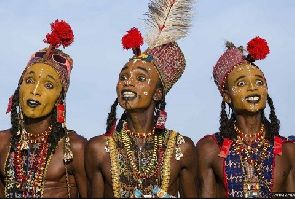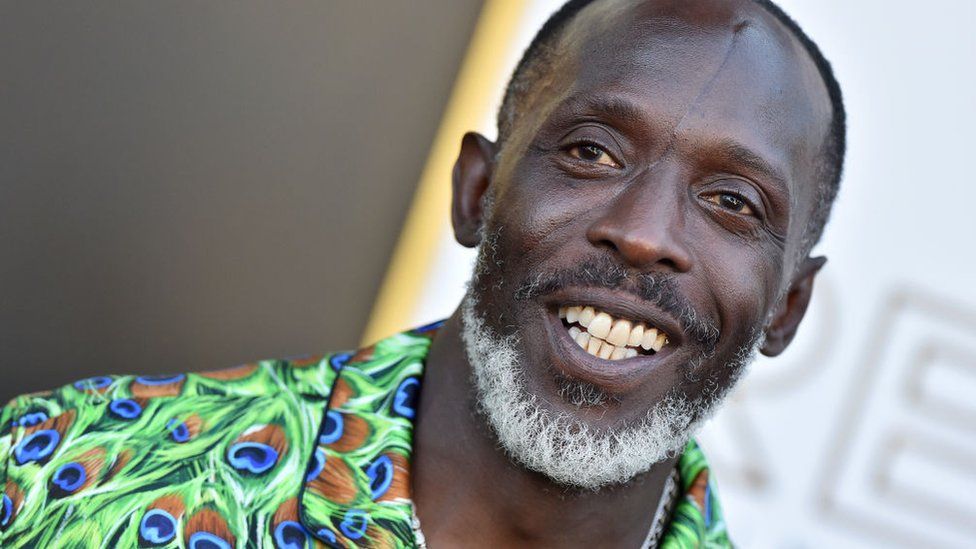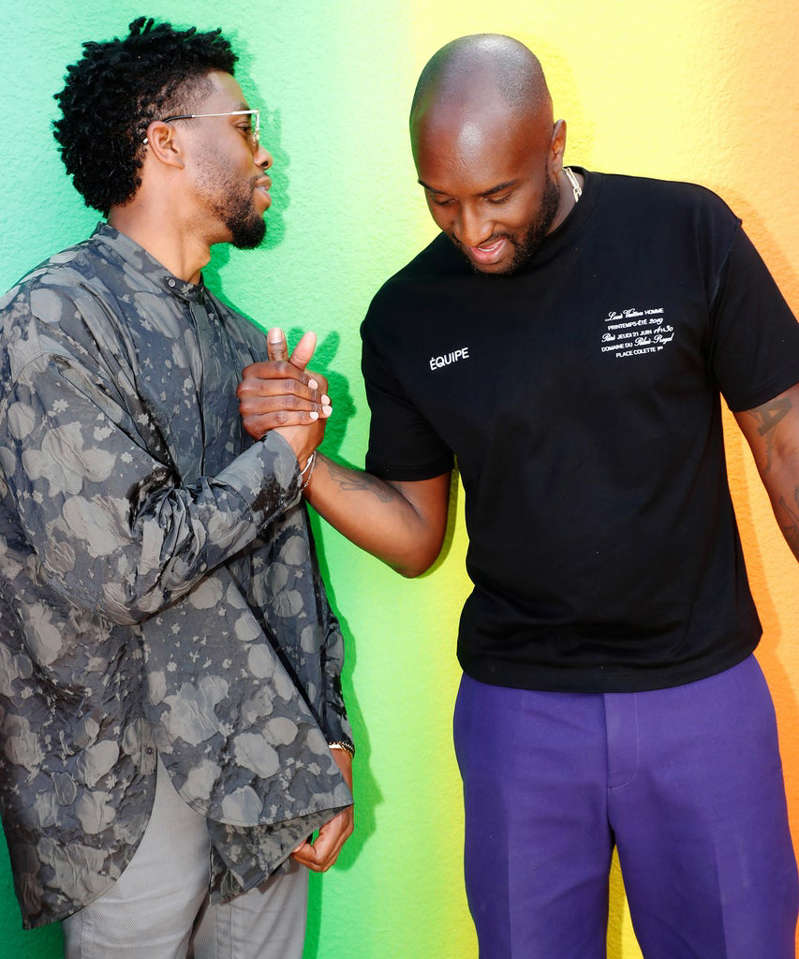Men of Chad’s Wodaabe culture put on their make-up and don their best clothes to impress would-be brides at a week-long festival.
Wodaabe men perform the “Yaake” ritual dance as part of the Gerewol, a week-long courtship ceremony in Chad. It must be one of the only African cultures which allows girls to take the lead in choosing their betrothed and even married women have the right to take a different man as a sexual partner.
Wodaabe means “people of the taboo” – these are subgroups of Fulani and Tuareg, who have migrated around this part of Africa for centuries. Here a Wodaabe man wakes up as dawn breaks in the Sahel desert – his donkeys and very basic shelter his only possessions.

The Wodaabes mostly live on milk and ground millet, with yoghurt, sweet tea and occasionally the meat of a goat or sheep. Here a child here shakes the milk in a calabash and churn it into yoghurt.
Men start preparing for the Gerewol at daybreak. From early on there is a mounting sense of anticipation, as some years see more than 1,000 people gather for the festivities. The men paint their faces with make-up made from clay, stones and animal bones crushed and turned into a paste. Some men were said to paint their lips black with chemicals from batteries to emphasise their white teeth.
This participant has shaved his hairline to elongate his forehead and is practising the eye-rolling, teeth-baring aspect of the dance, which shows off the features Wodaabe women find desirable.
A Wodaabe family shelter from the blazing sun in their basic home. Their wooden beds house all their possessions and the whole family sleep together.

A Wodaabe man pours his morning brew. Drinking tea is an important ritual in this culture. During Gerewol, men drink a tea made with fermented bark which is said to have a hallucinogenic effect, and also enables them to dance for hours on end
Preparations for the Gerewol festival are communal and everybody pitches in to help the men look their best. The hours the men spend on their clothes and make-up has led to the Wodaabe being called “the vainest tribe in the world”.
Some make-up is believed to have magical powers and the Wodaabe go to great lengths to secure it. The orange face powder is only to be found beside a special mountain near Jongooria in central Niger, and some clans must undertake a 1,400km (870-mile) round trip on foot to secure a supply.
Gerewol only happens once a year, so the pressure and anticipation is huge and finding a wife is so important.

Wodaabe men make some last-minute adjustments to their costumes for the night’s festivities, checking their reflections in brightly coloured pocket mirrors – indispensable accessories for the Wodaabe male. They look at them constantly, a bit like some people and their smartphones.
Although the girls wear less make-up than the men, they also take great pride in their appearance, plaiting and decorating their hair. The tattoos on this girl’s face are caused by scarification at a young age and indicate tribal affiliations, as well as strength and valour.
Here Wodaabe men grimace during the dance to show off their white teeth. The ostrich feathers in their hats emphasise their height.
A long line of Wodaabe men and boys, wearing bejewelled leather tunics and sparkling crowns and feathers, sways rhythmically backwards and forwards.
Two Wodaabe men take a break from dancing to catch their breath. The Gerewol festival is a gruelling test of endurance for the men, who dance for hours in stifling heat in the hopes of impressing a woman.
“align=”middle”>
This is the moment at the end of the week-long ceremony where, with the slightest of hands, a woman selects her husband at Gerewol. It all happens very subtly and quickly, she does not even look him in the eye. The festival is an inter-clan affair, in which women of separate lineages will pick men from opposing clans.
At sunset the ostrich feathers in the mens’ caps resemble palm trees. They make the Wodaabe, already an incredibly tall and lean people, even taller. Once the week-long festival is over, the Wodaabe return to their day-to-day life as nomadic herders.

Pictures and words by Tariq Zaidi.
Source: bbc.com








